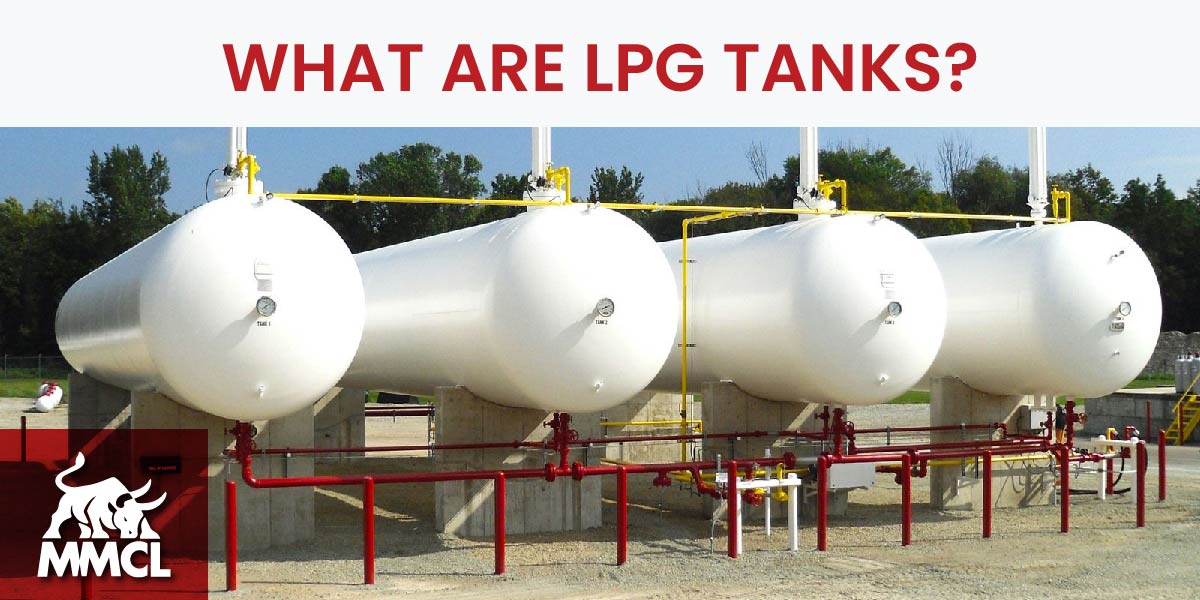Liquefied petroleum gas (LPG) tanks are specialized vessels designed for the transportation and storage of LPG. These storage vessels are otherwise named LPG containers or cylinders.
LPG is a combustible hydrocarbon gas combination that has become popular as a fuel form for a wide range of applications. In composition, it primarily contains propane and butane, with minor amounts of other compounds like ethylene or ethane. LPG has been in application for over a century after its invention by Walter O. Snelling for the first time in 1910. Grand View Research projects that the current perception of LPG as a more sustainable and safer substitute for petroleum and other fossil fuels will propel the worldwide market size to expand at a CAGR (compound annual growth rate) of 4.4% between 2020 and 2027.
The LPG tanks are composed of materials capable of effectively holding this flammable compound while featuring a design layout to bear enormous pressures.
What is the Purpose of LPG Tanks?
Since a single liter of LPG is just as effective as 270 liters of natural gas, LPG undergoes liquefaction to optimize its storage potential. It must, however, be kept under particular temperatures and high-pressure conditions for it to liquefy. Moreover, these parameters need to be constantly maintained during its storage period (and possible transit). This challenge has been overcome in
the form of LPG tanks. The primary purpose of LPG tanks is to transport and store LPG in residential or commercial settings. The most common applications for LPG tanks include the following:
- Domestic Applications: LPG is put to service in the domestic field for food preparation, temperature conditioning, and power household appliances such as stoves, hot water tanks, and central heating systems. It is also being substituted for chlorofluorocarbons to serve as a refrigerant and aerosol propellant to lessen ozone layer deterioration. LPG tanks make it feasible to conveniently store and supply this form of fuel to suit household energy demands.
- Industrial Applications: LPG has been employed as an important energy source in several industries, including manufacturing sectors, hotel management, agricultural production, and pharmaceuticals. The liquefied petroleum gas is securely stored on-site in LPG tanks for convenient access and oversight of the energy supply.
- Automotive Applications: Vehicles powered by LPG additionally incorporate LPG tanks as fuel reserves. To benefit from the inexpensive price and less carbon footprint that accompany this fuel source, many automobiles, transit vehicles, and taxicabs are already equipped with LPG conversion kits.
Various Types of LPG Storage Tanks
LPG storage tanks are offered in a variety of forms, each intended to fulfill a particular purpose and specification. Among the most prevalent forms are:
- Above-ground LPG Tanks: Among the most common options for domestic and small- to medium-scale commercial uses, these storage units are positioned above the ground. They usually have a cylindrical form and are accessible in a range of dimensions and capacities to accommodate consumer demands.
- Underground LPG Tanks: When there is a lack of room or for aesthetic considerations, these storage tanks are installed underground. Their bigger dimensions and capacity to hold a substantial quantity of LPG render them appropriate for utilization in commercial and industrial settings.
- Propane Bulk Tanks: These are enormous, industrial-use storage tanks with a large capacity. They often have to be custom-made to comply with certain industrial specifications and contain significant amounts of propane.
- ISO LPG Tanks: ISO tanks are specially designed containers intended to transport LPG over far-reaching distances. These storage vessels serve the purpose for bulk LPG transportation by highway, railroad, or sea and are designed per international safety guidelines.
Answers to Common Questions About LPG
-
Does the LPG Tank Hold Liquid or Gas?
LPG storage tanks can accommodate both liquid and gaseous forms. Collectively, propane and butane—the two gasses that are usually at ambient temperature and atmospheric pressure—make up LPG. These gasses liquefy when compressed and cooled, therefore can be pressure-stored in LPG tanks. The LPG vaporizes back into its gaseous state when it is discharged from the tank.
-
Why is it Referred to as LPG?
The combination of hydrocarbon gasses that makes up LPG is liquefiable at a moderate pressure, thus the term. The term “liquefied” describes the condition of the gas that remains in the tanks after it undergoes a transition into liquid form due to high-pressure confinement. The term “petroleum” describes the origin of LPG, which is obtained through the processing of natural gas and further refinement of petroleum.
-
Why Do LPG Measurements Use Kilograms?
Since liquid petroleum gas (LPG) is substantially denser than natural gas, it is marketed and measured in kilograms (kg). In contrast to natural gas, which is lighter and weighed in cubic meters (or cubic feet), LPG is maintained as a liquid under pressure, with varying volumes concerning pressure and temperature. Thus, the measurement of LPG in kilograms offers a more accurate and consistent way to determine how much LPG is being consumed.
-
Which Gas is Most Suitable for LPG?
For liquefied petroleum gas, propane has been considered to be the ideal gas. Propane vaporizes readily even in cooler temperatures because it has a lower boiling point than butane. Additionally, it generates energy with greater efficiency, which makes it a well-liked option for a range of purposes. However, depending on particular needs and weather circumstances, varying proportions of both gasses can be used, therefore LPG can be a mixture of both propane and butane.
Ending Note:
To sum it up, LPG tanks or containers are essential for the secure storage and conveyance of LPG for a range of applications. They make it feasible to utilize LPG as a fuel source in residences, businesses, and even automobiles efficiently and cost-effectively. Various LPG storage tank designs are available to accommodate a range of energy demands, providing a reliable and versatile supply of LPG

